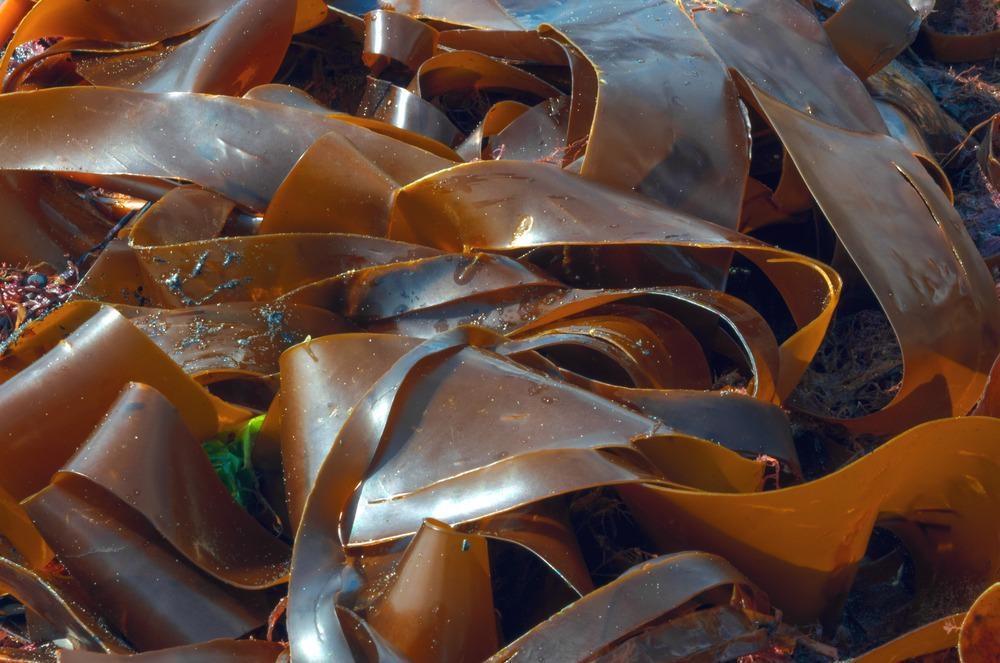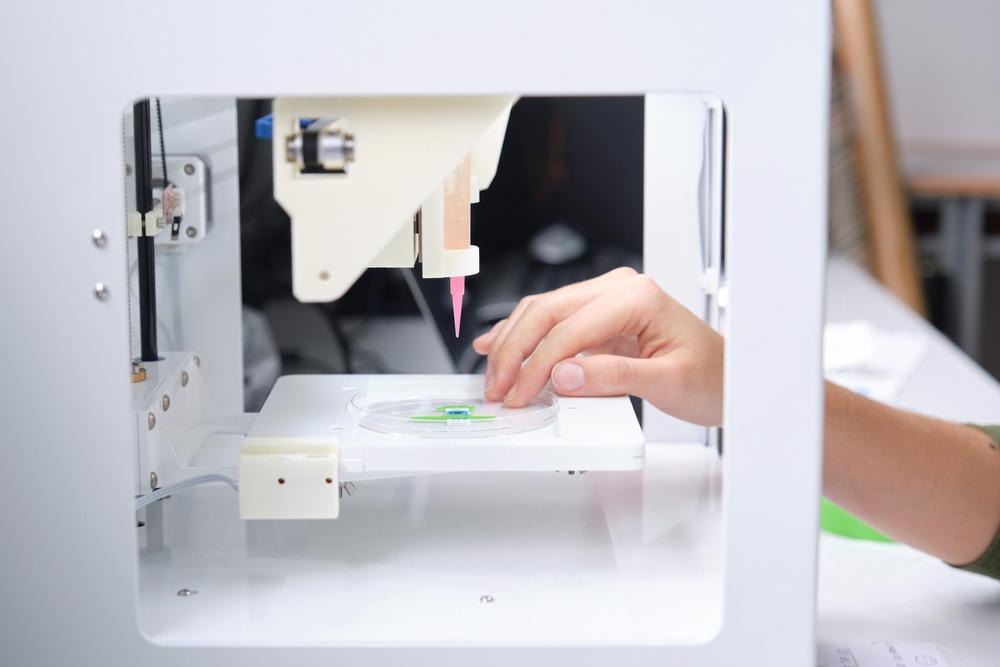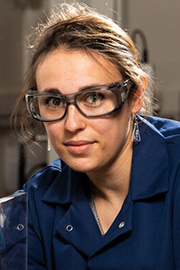AZoM talks to Dr. Anne Arnold about her research developing new alginate-based bio-inks for 3D printing structures to be used in a range of applications, largely within the biomedical field.
Could you tell us about yourself, your background in biomaterials, and what inspired your latest research in advanced manufacturing?
I am a materials chemist at the Pacific Northwest National Laboratory. My work in biomaterials began during my thesis work at Carnegie Mellon University, where our lab was designing materials to promote tissue regeneration after an injury or disease.
I really liked the research because I felt it could help people live better lives, so this is the reason why I wanted to keep working in the biomaterials field after joining PNNL. Considering this, our latest research here was inspired by the need to find better solutions for pathogen detection, which we thought could be addressed with biomaterials. It was really exciting because again, we would be focusing on biomaterial research that could really benefit society.
How did you bridge the gap from biomaterials and bio-detection to 3D printing?
Actually, biomaterials and 3D printing are very interconnected, especially with respect to tissue engineering. In order to be able to essentially create some type of construct that could be used to replace tissue, you have to have some type of three-dimensional structure.
3D printing is an excellent way to achieve that because it's so adaptable and you can print so many different types of materials. It’s really just an amazing technology that you can use to tailor a scaffold, specific to a patient's injury geometry.
Can you give us a little bit of an overview of bio-inks and their composition?
Bio-inks are composed of naturally derived polymers, such as the alginate we work with, as well as synthetic polymers. When these polymers are hydrated with water, they form a really thick liquid, similar in consistency to honey or molasses.
The bio-inks are also biocompatible, and that means that when the cells are added to the bio-inks, the bio-inks help keep the cells alive. So bio-inks are really unique because they can be 3D printed at room temperature to make sure that the cells stay alive. Bio-inks are then applicable to a wide range of research areas, including tissue regeneration, drug screening, disease modeling and, in our case, sensors.
Could you explain to us what led you to the idea of using alginate from brown seaweed in your bio-inks?
Alginate is commonly used already as a bio-ink, but the properties of the bio-ink are highly tunable, based on the formulation or what I like to call the bio-ink recipe. So basically, rather than reinvent the wheel, we decided to use alginate as a base to create our own bio-ink recipe for our bio detection applications.

Image Credit: Robert Ford/Shutterstock.com
What are the advantages then of using alginate compared to other natural polysaccharides that are available?
The reason why alginate is advantageous is because it’s widely available, at very low costs. It's also biocompatible and it has the capacity to be able to form cross-links with calcium ions. This helps convert the bioink from a really thick liquid into a stable 3D structure.
What's also really cool about alginate though is the fact that this cross-linking is actually reversible. This is important because it's really difficult to characterize cells that are embedded in a 3D print, but since the cross-linking is reversible with alginate you can actually dissolve the print, extract the cells and do more detailed analysis of them.
Could you run us through the production process for these bio-inks, and how they're administered to create structures?
Our bio-ink formulation is pretty straightforward and I like to think of it as a recipe. The way that we start preparing our bio-inks is by dissolving the alginate, which is a powder, into water. Again, this creates a really thick liquid like honey. This is the stage where you can add in your mica pigments, which are also powders, and you just stir them into the ink.
To get these inks prepared for 3D printing, you want to thicken them more. The way that we do that is by adding a little bit of a calcium solution, which again forms those cross-links with alginate polymers, so that you create a bio-ink that is thin enough to be extruded from a nozzle, but thick enough after printing that it maintains its shape. So this is actually a tunable process, based on the amount of calcium that you add, which is really, really cool.
Once you have all this and you've thickened up your bio-ink, you basically just load it into a syringe and you can print it by hand, or you can print it on a designated 3D printer.
All of your bio-inks use mica pigment powder, as you said, to create their vivid colors. Why did you choose these pigments? Was there any reason in particular?
The reason why we chose mica pigments has to do with the fact that we really wanted to know how solid additives, specifically nanomaterials, influence the properties of our bio-ink, because nanomaterials are an excellent way to change them.

Image Credit: Ladanifer/Shutterstock.com
In order to do this, we used the mica pigments as a surrogate for the nanomaterials, because mica pigments are micron-sized particles and working with micron-sized particles actually removes the safety issues associated with working with nanomaterials. In addition, the mica pigments are highly pigmented, so it makes them really easy to visualize in the bio-ink.
What are the bio-detection applications then that these inks would be used in?
Essentially this would be pathogen detection. For instance, regarding harmful bacteria and being able to study if the pathogens are present, or what their effect is on human cells. You could print a variety of different human cell types in these bio-inks, such as lung cells, brain cells, and cells derived from the liver, to see the effects on all of these different cell types from this pathogen.
As well as biomedicine, what kinds of industries could these bio-inks be used in?
I think that these could be utilized for a variety of different purposes. In terms of biomedicine, I think that they could be used to create anatomical prints of tissues and organs that could be used in the medical fields to help surgeons, for example, practice on 3D printed models before performing the procedure on the patient.
They could also be used to recreate rare medical specimens for museums or educational purposes. In terms of the mica formulations, I think these bio-inks could be used as a STEAM activity, to really teach children basic science concepts, while being also able to utilize their creativity to create pieces of art. Lastly, I think obviously these could be used by artists to create really unique 3D compositions.
What is the most exciting potential use of these bio-inks for you personally?
I’m a scientist but also an artist, and a STEAM education ambassador here at PNNL. I'm really, really excited to see how this bio-ink material could be used to promote STEAM education. I think that was probably the most exciting thing for me while we were going down this path.
Would this educational focus be what's next for ArtSea Inks and Materials? Is there anything else in particular that you’re really pushing for with these materials?
In terms of utilizing it for STEAM education, that is something that's ongoing right now. But we're also going to continue with this bio-ink formulation in the bio-detection area.
As for PNNL, they are really doing a lot of additive manufacturing research, and not just in the biofields. It's just been really interesting because I also work on other projects where we're designing high-performance materials for traditional 3D printing with plastics.
More Research from Dr. Arnold
Dr. Anne Arnold and her team have published a new paper on the use of the mica pigments discussed above as additives in high-performance thermoplastics that can be 3D printed. The 3D filaments they report are novel, and the mica pigments make it easier to print the thermoplastics, which have melting temps > 300 C and sparse solubility in strong acids, with the bonus of imparting color to an otherwise brown material. You can read more about this research here.
About Dr. Anne Arnold

Anne Arnold is a post-doctoral researcher at PNNL in the National Security Division, where she works as a materials chemist. Prior to PNNL, she received her B.S. in chemistry from Saint Francis University, M.S. in biology from the University of Massachusetts Lowell, and Ph.D. in chemistry from Carnegie Mellon University. Her work at PNNL involves the design, synthesis, and characterization of new materials or modification/repurposing of commercially available materials for aerospace, threat detection, and complex separations. Anne strives to identify unique problems matched with creative approaches to address pertinent issues. She finds the complexity and creativity involved in her scientific work compliments the creation of new art compositions in her spare time.
Disclaimer: The views expressed here are those of the interviewee and do not necessarily represent the views of AZoM.com Limited (T/A) AZoNetwork, the owner and operator of this website. This disclaimer forms part of the Terms and Conditions of use of this website.